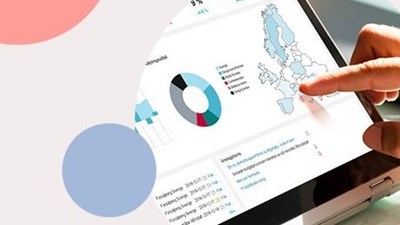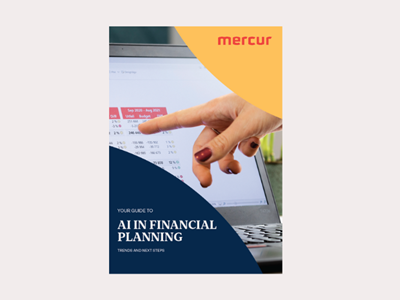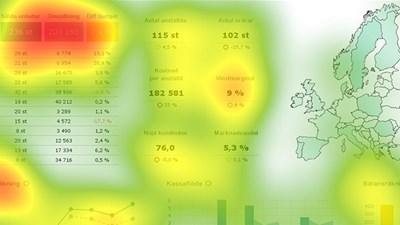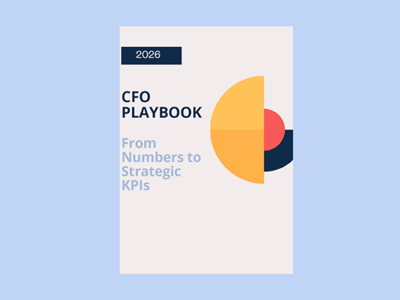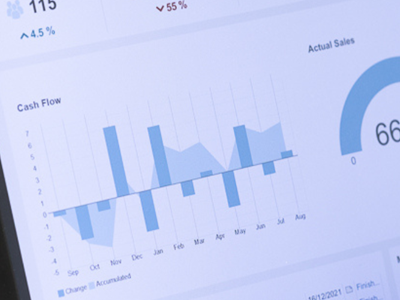
Veloxic xP&A rips through data for all users anytime, anywhere
Informed Business Decisions at Maximum Velocity
The ability to process information swiftly is essential. If your business can’t manage your data efficiently, your company’s financial performance will surely underperform.
Today’s data management problems often arise from antiquated storage and retrieval methods. Structured Query Language (SQL), OLAP and disk storage were once satisfactory, but not anymore.
Companies require business reports more frequently and with greater detail. Monthly analysis is a thing of the past, Management Reports are expected fortnightly, weekly and daily. Depending on the size of operations, the depth of coverage can extend from regional to national to global. Financial scenarios have increased to encompass the requirements for multiple adjustments for interest rates, inflation, supplier and commodity price changes, acquisitions, and others.
Company executives have expressed increasing frustration at not having their data quickly enough to create the projections and reports that modern business practices demand.
No business leader can afford to wait to streamline processes.
Veloxic Helps Financial Planning and Analysis
Our research to make every second count led to Veloxic, the database pivotal to Mercur Business Control. Our extended Planning and Analysis (xP&A) application is blisteringly fast and globally accessible.
Reports generated by Veloxic don’t queue; they are delivered in an 'instant'. No more sending deep data queries or 'kicking off' processes at the end of the working day to provide your system enough time to deliver the answers the following morning. No more denials of access to financial information for key executives during those computations.
With Mercur Business Control and its powerful Veloxic database, you can collect data, analyse, and generate easy to consume reports that provide you and your colleagues with a comprehensive view of your company’s position and direction.
Mercur Business Control provides a fast, user-friendly, flexible, and efficient solution for budgeting, forecasting, reporting, analysis, and performance management. All data is encrypted and secure. All key performance indicators (KPIs) are visible on the system’s dashboard.
Identifying the Business Problem
The primary reason so many company departments can’t show trends or current business affairs is their failure to access all data to calculate a projection, forecast or solve some financial problem. The root of their inefficiencies is disparate data silos.
In other words, there is a disconnect between data entered and stored; excel, google sheets, sql database, disparate ledger, adhoc local systems– from a desktop on the other side of the office or at a subsidiary halfway around the world. The data stands alone, almost useless until combined with other data sets.
Mercur Business Control is a cloud-based SaaS (Software as a Service) solution that consolidates, combines, aggregates and stores your data. It integrates with any enterprise resource planning (ERP) or data source, making it seamless for budgeting, planning, forecasting and reporting, and analysis.
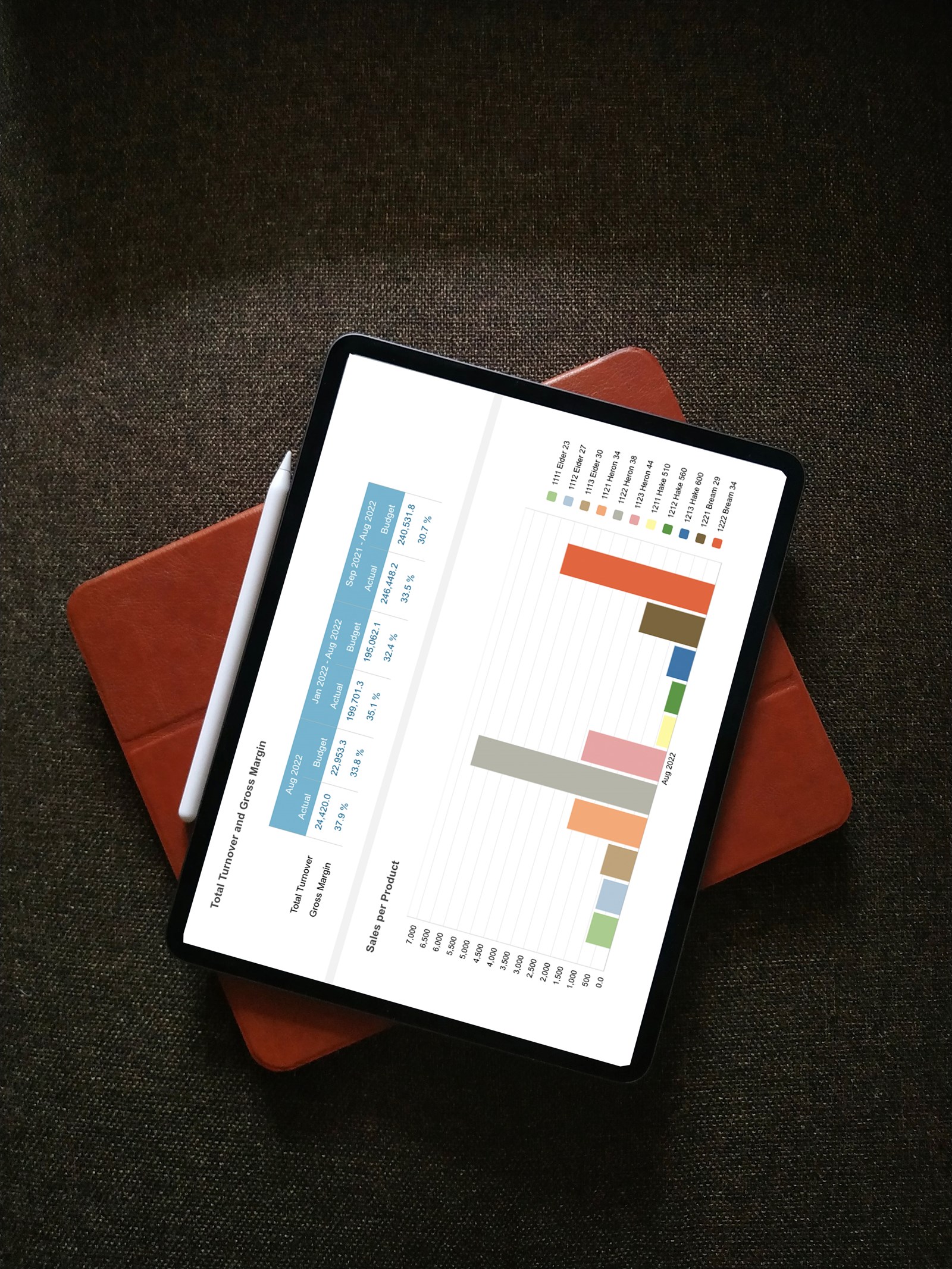
Veloxic’s Hybrid System Provides Cost-Effective Speed
How, exactly, is Veloxic so quick, versatile and affordable?
Access to large complex and disparate datasets and the consolidation and collection of these data sets has previously been the realm of IT. Even the storage and processing of those data sets has been expensive but no longer. Mercur’s engineers created a hybrid system to combine fast in-memory processing with efficient on-disk storage.
Veloxic migrates data between memory and disk for greater flexibility and economy than pure memory databases. Veloxic’s memory is used primarily for frequently accessed data to optimise performance.
Less frequently accessed data is stored on disk, making Veloxic a cost-effective and budget-friendly component of Mercur Business Control.
‘Multi-Dimensional’ Computation of Data
Unlike traditional relational databases optimized for simple queries, Veloxic handles complex, “multi-dimensional” queries.
Veloxic can examine, say, General ledger and Sales Ledger combination for a specific product category, for a particular customer, within a selected narrow time dimension day, month, quarter, year, within a particular region, and so on. This type of query provides a more detailed and contextual view of data, making it particularly useful for complex analytical tasks and business intelligence queries.
By contrast, a “one-dimensional “query might involve retrieving the total sales for a specific product category. You could use certain commands in SQL to join other data sets, but this can be awkward and slow the a fallback on IT resources to collect, query and then combine data sets. This is times consuming and expensivce.
Features and Benefits
Veloxic, integral to Mercur Business Control, provides many features and benefits.
Concurrency management: Veloxic utilises MVCC (Multi-Version Concurrency Control) technology, ensuring that multiple operations can coincide without waiting for other users to finish
Continuous data updates: Veloxic data is updated continuously through imports and inputs, keeping the database current and reflective of real-time information
Granular data analysis: Veloxic empowers users to dive deep into the data, enabling a comprehensive understanding and versatile reporting.
Total freedom and flexibility: Users can analyse data without limitations imposed by the database’s design. The end result is flexible reporting and analysis without compromising performance
Integrative capability: Veloxic can seamlessly integrate with various data sources, ensuring a unified view of information across the organisation. For businesses with diverse data streams, this is an invaluable tool.
Intuitive System for Deep Analysis and Business Models
The user interface in Mercur Business Control for building and structuring models, reports and analyses is simple, flexible, and intuitive. With only a little training, you can create whatever you need.
Veloxic’s quick delivery is shown in our data-driven dashboards, you’ll see the KPIs of your business in colourful details coming to you at speed.
No one should ever be concerned with data limitations or limitation on user number of users. Mercur Business Control takes care of that for you.

Drive Forwards with the Powerful Veloxic Engine
You owe it to yourself and your company to get into the driving seat and try out the Veloxic database. You’ll see the sum of the parts – Mercur Business Control, a single unified solution that provides complete agile analysis.
Arrange a Mercur Business Solutions demo and watch your data come to life. You really will have an Eureka moment.
As for installation, you can be up and running with Veloxic and Mercur Business Control in just a few days.
World-class performance with Mercur Business Control®
With Mercur Business Control® and its powerful database Veloxic®, you can easily collect data, analyze, and generate beautiful reports that provide you and your colleagues with a comprehensive view of where your company stands and where it's heading. In other words, you get a fast, user-friendly, flexible, and efficient solution for budgeting, forecasting, reporting, analysis, and performance management.
For almost 50 years, we have been assisting hundreds of leading organizations across various industries in managing their operational challenges, allowing them to have more time for analysis and future planning.
Contact us for more information
Please fill out the form, and we will contact you to provide more information!
 Blog
BlogHow to get accurate financial reports without waiting for month-end
You don't need to wait until month-end to see accurate financial reports. With modern financial systems you can access up-to-date reports whenever you need them.
 Blog
BlogManagement Reporting Guide: Definition and Tips
Management reporting helps you see what’s really happening in your business. In this guide, we’ll explain what managerial reporting looks like and share practical tips.
 Blog
BlogWhat Is FP&A? Definition, Purpose, and Best Practices
Without solid financial planning and analysis (FP&A), businesses operate in the dark. In this post we go deeper into the process of FP&A and why it’s important for businesses.
 Blog
BlogHow To Create a Successful Budgeting Process
When done well, budgeting helps organisations stay financially on course, even when things don’t go exactly as planned. Learn how to keep things on track so you avoid surprises and stay focused on your goals.
 Blog
BlogWhat is management reporting?
Management Reporting refers to the process of creating, analyzing, and presenting information about various aspects of an organization's performance to enable decision-makers to make well-informed decisions about the future.
 Blog
BlogBusiness Intelligence Reporting For Finance Teams
The real challenge today isn’t collecting data, it’s making sense of it and fast. Organisations turn to business intelligence (BI) to convert raw data into insight.But how do you actually do it right?
 Blog
BlogBest Guide to Improve Your Revenue with Flexible Budgeting
Optimise your expenses with flexible budgeting, and learn how to adjust budget to reflect current business activities, market changes and cost fluctuations.
 Blog
BlogRolling Forecasts: Practical Steps, Benefits, and How to Get Started
Financial planning has changed. Traditional annual budgets can’t keep up with rapid shifts in the market, evolving customer needs, and internal performance dynamics. That’s why many finance teams are turning to a rolling forecast model.
 Blog
BlogSave time and create a successful budget process
If you’re working in a large organization, you’re probably aware of how time-consuming the budget process can be. In this article we’ll give you tips on how to save time and still create a successful budget process
 Blog
BlogHow can AI help CFOs make better decisions?
Artificial Intelligence (AI) has significant potential to enhance decision-making for Chief Financial Officers (CFOs) by providing data-driven insights, automating routine tasks, and enabling more accurate forecasts.
 Blog
BlogA practcial guide to scenario planning
Scenario planning gives you a clear, practical way to test assumptions, spot risks and opportunities, and make better strategic choices so your organisation stays resilient when conditions change.
 Blog
BlogHow Automated Reporting Will Transform FP&A in 2026
This article highlights the power of report automation, how to implement it in your business and explores any new opportunities for accurate financial analysis in the long run.
 Blog
BlogBalancing Profitability and Sustainability
Sustainability has become a central concern for organisations across the world — and the UK is no exception. This evolving landscape places new demands on financial reporting.
 Blog
BlogWhy xP&A is a powerful game-changer
The newest iteration of planning, analysis and reporting systems is a powerful game-changer that unites company departments and boosts competitiveness. It’s called xP&A – the abbreviation of extended financial planning and analysis.
 Blog
BlogThe Hidden Cost of Data Silos
If you ever feel like your teams speak different languages when it comes to data, it is a classic symptom of data silos. The information gets stuck in one department, system or tool, making it difficult for anyone to see the full picture.
 Blog
BlogAI in Financial Planning: Trends and Next Steps
Discover how finance teams are using AI to drive smarter planning, faster insights, and stronger business decisions.
 Blog
BlogBoost Report Readability, Engagement, and Decision-Making
In today’s fast-paced business environment, effective reports and dashboards are crucial for decision-making. Our user study using eye-tracking technology revealed seven key insights into what captures attention.
 Blog
BlogAI in Finance as a Powerful Tool
In this post, we explore how AI is evolving from a theoretical concept into a valuable resource for decision-making. Get useful insights for finance teams at any stage, from early exploration to actively using AI-powered solutions.
 Blog
BlogBetter Revenue Planning
Sales forecasting is the process of predicting future revenue based on past data and trends. Read the blog to learn the best methods to do it right.
 Blog
BlogVariance Analysis: A Comprehensive Guide
Senior executives are demanding more detail in their management reports. The amount of data available to finance departments has exploded and decision makers see this as an opportunity to get more insight into how the business is performing.
 Blog
BlogFrom static budgets to agile financial management
Traditional budgeting has long been the cornerstone of financial planning in businesses. But today it can become more of a limitation than a strength. That’s where the concept of Beyond Budgeting comes in.
 Blog
BlogHow do finance teams track KPIs across the entire organisation?
Learn how finance teams track KPIs across the entire organisation by consolidating data from multiple sources into a unified system like Mercur.
 Blog
BlogZero-Based vs. Incremental Budgeting
Budgeting sits at the heart of sound financial management. This is why choosing the right technique is crucial for CFOs – it shapes resource allocation, cost control and strategic agility. Incremental and zero-based budgeting are two leading methods that offer distinct approaches.
 Blog
BlogHow EPM Transforms Financial Planning and Forecasting
Struggling to keep plans aligned in a changing market? Discover how EPM helps finance teams move faster, stay accurate and lead with real-time insights.
 Blog
BlogThe Collaborative, Smarter Budget
In many organisations manual budgeting processes over-burden staff and create masses of data which overwhelms department heads and stops them seeing the bigger picture.
 Blog
BlogTop PowerBI Alternatives in 2025
Explore the top PowerBI alternatives for 2025. Discover how Mercur delivers integrated planning, budgeting and reporting without the high cost and complexity.
 Blog
BlogSpreadsheets are not Collaborative Tools
Spreadsheets were never designed for collaboration, yet they are the single most used program among teams and co-workers. They often start out as a quick document for storing, formatting or calculating information but evolve into important documents and are often the core records for an organisation.
 Blog
BlogTop-Down vs Bottom-Up Budgeting
Budgeting aligns resources with strategic goals, and there are two primary approaches: top-down and bottom-up. Which method wroks best?
 Blog
BlogFive tips for a successful budget process!
How can you make your budget process more successful and maximise the effort that was invested in creating it? Of course, there are many factors to consider but we’ve chosen to highlight five key areas that will enable and help you create a smoother, value-creating and collaborative budget process.
 Blog
BlogThe Powerhouse of EPM Tools
A business’s success heavily relies on having a strong strategy. However, what's even more important is implementing that strategy while tracking and measuring the performance. This can easily be done by investing in enterprise performance management (EPM) software.
 Blog
BlogTop 7 Manager KPIs for Financial and Operational Success
In today's post we'll break down why KPIs matter, which ones offer the most insight for finance and executive teams and how to ensure they're actually driving results.
 Blog
BlogWhy is our Excel-based budget always out of date?
Excel creates outdated budgets. Every time someone enters a figure, sends a file, or waits for another department to finish their section, your budget falls further behind reality.
 Blog
BlogBusiness Budgeting Software: How to Choose the Right One
Choosing budgeting software is partly a finance and partly a strategic decision. The right tool helps organisations organise planning cycles, adapt as the market changes and increase accountability across departments. But not every platform will be a good fit.
 Blog
BlogThe Role of the CFO: Top Priorities and Responsibilities
Today's finance leaders steer more than just budgets and reports. The digital transformation ramps up with the increase of corporate complexity, and so does the role of CFOs.
 Blog
BlogSpreadsheet Risk Management: Best Practices for 2025
Excel has long been a target for hackers; just one click on a malicious attachment can infect your entire network. So, how can you keep using spreadsheets while not sacrificing your safety?
 Blog
BlogWhat is Corporate Performance Management? (CPM)
CPM, or Corporate Performance Management, is a process within corporate management aimed at measuring and optimizing the performance of an organization. CPM encompasses a range of activities, including budgeting, planning, forecasting, reporting, and analysis.
 Blog
BlogScenario Planning - Better control during uncertain times
Uncertain times create the need for more frequent forecasts and time for analyzing and comparing different future scenarios. We give you 5 tips on how to simulate future scenarios using scenario planning
 Blog
BlogHow to succeed with your planning, budgeting, and forecasting process
We know it can be challenging to succeed with your planning, budgeting, and forecasting process. Therefore, we have gathered our best tips for you to succeed!
 Blog
BlogBudgeting in a modern world
Thirty years after its debut, Microsoft Excel is still the preferred tool for budgeting and planning projects. However, its popularity is declining, due in most part to the rise of technology and subscription-based pricing for a myriad of SaaS-based products.
 Blog
BlogWhat Is Planning, Budgeting and Forecasting?
Planning, budgeting and forecasting are rarely static. Shifts in the industry often require you to revisit assumptions, adjust targets and adopt new processes. Learn how to strengthen your approach and stay ahead of change.
 Blog
BlogCFO Playbook - KPIs for 2026
The role of the CFO is changing fast. Today, the finance function is expected to deliver more than reports — it must drive direction, speed and profitability through clear, actionable KPIs. Learn more in this guide.
 Blog
BlogSpreadsheets Risk the Future of the Business
Spreadsheets often start as just a list for storing information and there is minimal process documentation, support or maintenance for these worksheets. Despite the fact that desktop applications such as Microsoft Office are included in the standard configuration of users' PCs, very little formal training is ever given to spreadsheet users.
 Blog
BlogAI and Machine Learning, what is it, and why is it important for the future?
Artificial Intelligence and Machine Learning, what is it, and what is the difference?
 Blog
BlogFP&A Trends Shaping Financial Planning in 2025
Many organisations cope with fragmented planning and data quality issues, which slow down their forecasting cycles. This forces organisations to take practical steps to turn ambition into execution.
 Blog
BlogBuild Long-Range Planning for Business Success
Discover how effective long-range planning aligns strategy, finance and operations for smarter decisions and sustainable growth.
 Blog
BlogMastering Spreadsheets
Where many businesses start small, a simple spreadsheet can adequately perform the limited tasks required of it. As the company grows, your spreadsheets can get more complex and harder to manage, by which point it feels like it will be too difficult to move to a different reporting tool.
 Blog
BlogCash Flow Forecasting
Inaccurate cash flow forecasting can be a costly mistake for companies. In today’s volatile market, relying on static annual budgets or manual spreadsheets leaves financial leaders without the agility to respond to uncertainty.
 Blog
BlogAI in corporate budgeting
Artificial Intelligence (AI) can support decision making in key areas such as budgeting, capital allocation and even corporate strategy and as a result, it is increasingly being deployed in corporate performance management tools (CPM).
 Blog
BlogThe Business Benefits of Integrated Business Planning
This blog explores what IBP is and the typical IBP process. We highlight business benefits and how the right software can be a game-changer for your organisation.
 Blog
Blog3‑Statement Model for Better Financial Forecasting
Financial forecasting is critical for any business that wants to adapt to change. But finance teams keep usingfragmented models and manual processes. The 3-statement financial model is the solution.
 Blog
BlogRisks with working in spreadsheets
Spreadsheets are an essential tool for all types of organisations and businesses rely on them heavily, particularly for financial computations. The most popular spreadsheet program globally is, of course, Microsoft Excel, it’s used by an estimated 750 million people.
 Blog
BlogHow to Effectively Budget with Driver-Based Forecasting
Traditional models of forecasting rely on historical data and beliefs. It uses techniques that identify patterns, which are simple to use. However, with these methods, there are some challenges because they are not dynamic with today’s market, and can’t effectively analyse complex data.




